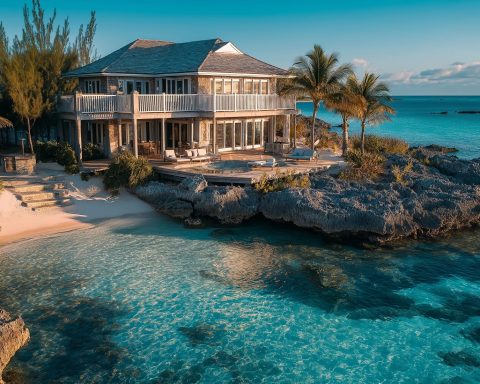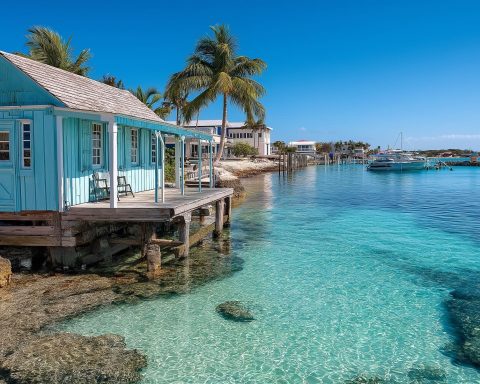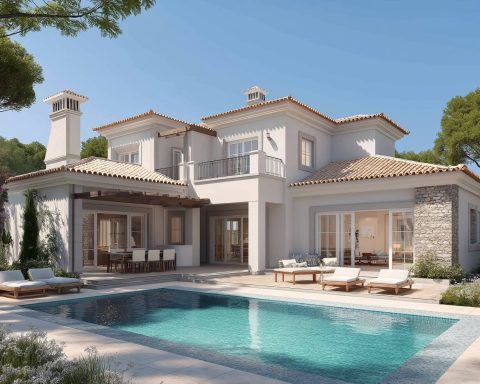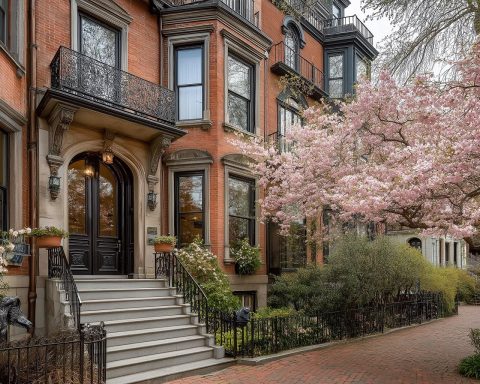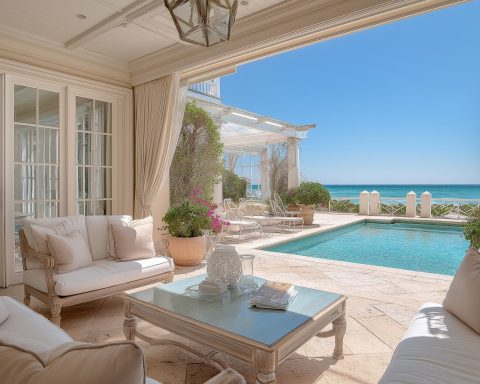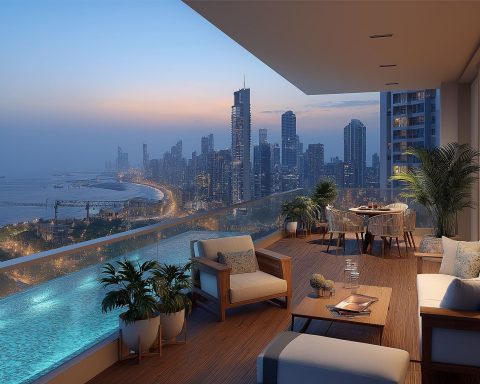Marbella’s property market is surging into 2025 on a wave of record-breaking growth and resilient demand. Long known as the jewel of Spain’s Costa del Sol, Marbella is seeing soaring sales, rapidly rising prices, and a thriving luxury segment that continues to attract affluent international buyers. Despite global headwinds, the local real estate sector remains buoyant and resilient, supported by strong foreign investment, limited housing supply, and a robust tourism rebound. Below, we dive into all major aspects of Marbella’s real estate market in 2025 and beyond – from residential trends and luxury dynamics to rentals, new developments, and future forecasts – with data-driven insights and expert perspectives.
1. Residential Real Estate Trends in 2025
Surging Sales Volume: Marbella’s residential market entered 2025 at full speed. Home sales in the broader “Golden Triangle” (Marbella, Estepona, and Benahavís) jumped by 24.7% year-on-year in Q1 2025 dmproperties.com – nearly matching the record transaction levels of the 2022 boom. In the first quarter of 2025, 2,339 properties were sold in these three municipalities (up from 1,875 in Q1 2024) dmproperties.com. Marbella itself saw over 1,200 sales in Q1 2025, a 7.8% annual increase dmproperties.com, reaffirming its status as the region’s largest and most active market. Estepona led growth with a 59% surge in sales (thanks to new developments completing), while Benahavís also rose 17% dmproperties.com dmproperties.com. Even though 2023 saw a brief dip in total transactions after the exceptional 2022, activity remained historically high and picked up again in 2024, with the first half of 2024 already 5.4% above the second half of 2023 dmproperties.com. In short, demand for homes is robust and the market has proven healthy and resilient despite economic fluctuations dmproperties.com.
Rising Prices and High Demand: Property prices in Marbella continue their steep climb. Across all property types, asking prices in Marbella were up about 13.7% from mid-2023 to mid-2024 panoramamarbella.com, reaching a historic high of roughly €4,812 per square meter by June 2024 panoramamarbella.com. As of mid-2025, average prices have edged even higher – around €5,213/m² in Marbella (an +8.3% annual increase) idealista.com – by far the highest on the Costa del Sol. This means prices have more than doubled over the past decade panoramamarbella.com. For context, the Golden Triangle’s average price (~€4,260/m² in early 2025) towers above both the Andalusian regional average (€1,857/m²) and the broader Málaga province average (€2,869/m²) dmproperties.com. Such sustained price growth is fueled by excess demand and shrinking inventory. The number of homes for sale has been steadily dropping – the housing stock in Marbella fell by ~9% from Q2 2023 to Q2 2024 (and by nearly 18% in some prime areas like East Marbella) panoramamarbella.com. With buyers far outnumbering sellers, limited supply coupled with eager demand is pushing prices to new peaks. Notably, 90%+ of sales in the Marbella area are resales (not new builds) dmproperties.com, as new development has not kept pace with demand. Even so, new-build homes – prized for their modern amenities – sell briskly and often off-plan, contributing to price pressure (new builds represented <10% of sales in 2023 in Marbella, vs ~19% in Málaga province overall) dmproperties.com.
Resilient Market Drivers: Several factors underpin Marbella’s booming residential market. First, tourism has roared back to record levels, introducing new visitors who often later become property buyers panoramamarbella.com panoramamarbella.com. The Costa del Sol celebrated 2023 as its best tourism year ever (14 million visitors, +9.4% vs 2022) panoramamarbella.com, and 2024 is on track to break records again with an 18% surge in early 2024 visitors panoramamarbella.com. Marbella’s climate, safety, and lifestyle appeal as a “safe haven” in Europe continue to draw people in panoramamarbella.com panoramamarbella.com. Secondly, Spain’s economy and credit conditions have remained supportive – Spain is forecast to grow ~2.8% in 2025 (one of the fastest in the EU) dmproperties.com, interest rates are expected to start easing, and surprisingly mortgage lending in Spain has risen despite higher rates dmproperties.com dmproperties.com. That said, Marbella’s high-end market is largely cash-driven – less than 10% of luxury purchases (over €2M) use mortgages panoramamarbella.com – insulating it somewhat from interest rate volatility. Finally, the post-pandemic trend of remote work has spurred more relocation to lifestyle destinations; Spain’s new Digital Nomad Visa (Startup Law 2023) is attracting remote workers and entrepreneurs, some of whom are settling in Marbella and boosting housing demand dmproperties.com. Overall, Marbella’s residential sector in 2025 is defined by strong fundamentals – high demand (both foreign and domestic), scarce supply, and confident buyers – laying the groundwork for continued growth.
2. Luxury and High-End Property Market Dynamics
Marbella is synonymous with luxury real estate, and the high-end segment continues to thrive. This market is characterized by multi-million-euro villas, upscale gated communities, and prime coastal apartments that draw global elites seeking sunshine and exclusivity. In 2024–2025, demand for luxury properties remains red-hot, pushing prices in Marbella’s top enclaves to unprecedented levels. The famed Golden Mile and nearby ultra-prime areas have “become a victim of their own success,” with prices per square meter now rivaling major world cities like London or Paris dmproperties.com. Limited inventory in these elite locations (e.g. beachfront Puente Romano) has driven prices so high that even many affluent buyers are priced out dmproperties.com. For example, new or renovated luxury apartments in Marbella typically range from ~€6,000/m² up to €30,000/m² in the most exclusive frontline beach zones of the Golden Mile panoramamarbella.com. Modern villas similarly start around €8,000/m² and can exceed €10,000–€14,000/m² for top-tier properties panoramamarbella.com. These figures underscore Marbella’s standing among the world’s priciest markets – in Knight Frank’s 2024 Wealth Report, Marbella ranked as the 13th most expensive prime residential market globally, leapfrogging even places like Mallorca and Vancouver panoramamarbella.com. (Still, it remains a relative bargain compared to Monaco, the priciest, at ~€58,000/m² panoramamarbella.com.)
Buyer Profile & Trends: The luxury segment in Marbella is overwhelmingly driven by international high-net-worth buyers, often seeking second homes or retirement havens. Cash purchases are the norm (as noted, <10% of €2M+ sales involve mortgages panoramamarbella.com), indicating the financial strength of these buyers. While traditional markets (UK, Northern Europe, Middle East) continue to be well represented, there are notable new trends in buyer demographics. Agents report a revival of interest from North America and the Middle East, with more wealthy visitors from the U.S., Canada, and GCC countries in the past year – typically ages 35–50 – who are discovering Marbella’s lifestyle and sometimes purchasing high-end homes panoramamarbella.com. At the same time, Eastern European demand (Poland, Czech Republic, etc.) has been rising from virtually nil to a noticeable segment dmproperties.com, and there’s even a modest comeback of Russian buyers (albeit not oligarch-level) alongside an influx of Ukrainians relocating since 2022 dmproperties.com. The British remain a cornerstone of the luxury market – despite Brexit, UK buyers still topped foreign purchases in 2023 (around 15% of Málaga province sales) dmproperties.com and continue to lead in 2024. Wealthy buyers are increasingly discerning: modern design, new construction, and branded residences are in high demand dmproperties.com. Developers have responded with projects like designer-branded villas (e.g. the new Elie Saab Villas in Sierra Blanca) and amenity-rich condominiums. Post-Covid preferences have also shifted slightly – after an initial craze for turnkey, compact modern villas, many high-end buyers are again seeking more spacious properties with ample land/gardens for privacy dmproperties.com. Overall, the luxury sector shows no signs of cooling; experts project continued price appreciation of ~5–10% through 2025 in Marbella’s prime segment as wealthy buyers compete for a finite number of marquee properties dmproperties.com dmproperties.com.
Prestigious Areas & Developments: Marbella’s high-end market revolves around a few coveted areas. The Golden Mile (stretching between Marbella Club and Puerto Banús) remains the definitive ultra-prime strip, home to iconic estates and luxury beachfront apartments – it consistently achieves the highest prices, though sales volumes there are constrained by scarce listings dmproperties.com. Just inland, the gated community of La Zagaleta (in Benahavís) retains its allure for the ultra-wealthy seeking mansions with large plots and top security dmproperties.com. Nearby El Madroñal is seeing a renaissance as older villas are renovated and new ones built, attracting buyers desiring privacy in the hills dmproperties.com. Other perennial favorites include Sierra Blanca, Nueva Andalucía, Guadalmina, and Los Monteros, which consistently draw high-end buyers dmproperties.com. On the horizon, a number of major luxury developments are fueling excitement. For instance, El Real de La Quinta (a newly established country club estate north of Nueva Andalucía) is “hotly in demand” for both villas and apartments, offering modern homes in a pristine natural setting dmproperties.com. Emerging luxury zones just outside Marbella, such as Los Flamingos and El Paraíso (between Marbella and Estepona), have also risen in prominence – large swaths of land there have been bought up and built on in the last few years, providing brand-new high-end homes at prices slightly below Marbella’s top tier dmproperties.com. In the super-prime category, several new 5-star hotel-branded residences are underway (or recently completed), including projects affiliated with global luxury hotel brands. These not only add glamour but also increase the supply of serviced high-end apartments for those seeking a turnkey luxury lifestyle. All told, Marbella’s luxury market in 2025 is dynamic and supply-constrained – a combination that virtually guarantees continuing price strength and intense competition for the finest properties.
3. Commercial Property Trends
While best known for residential glamour, Marbella’s commercial real estate sector is also evolving in 2025, buoyed by the area’s economic growth and population influx. Hospitality and retail properties stand out as strong performers, thanks to the resurgent tourism and high consumer spending by both tourists and affluent residents. Many new hotels, resorts, and restaurants are opening or in development, reflecting confidence in Marbella’s appeal as a year-round luxury destination. (For instance, the iconic Marbella Club and Puente Romano hotels have been joined by newer entrants and expansions, and international brands are investing in the region’s hospitality scene panoramamarbella.com.) Hotel occupancy on the Costa del Sol hit ~88% in June 2024 and was projected around 90% for peak summer panoramamarbella.com – near record highs – which is sparking investor interest in hotel acquisitions and developments. Experts note that high-end tourism is at an unprecedented peak, with virtually no off-season now as visitors come year-round panoramamarbella.com. This has translated into prime opportunities for commercial investment in hotels, resorts, beach clubs, and upscale dining and retail venues that cater to luxury travelers.
Retail and office real estate in Marbella is more of a niche market but shows positive trends. The city’s growing full-time population (swelled by expatriates and digital nomads) has increased demand for premium retail space, especially in Marbella’s marina, old town, and shopping centers. High footfall areas like Puerto Banús and Marbella’s upscale shopping streets command top rents, and vacancy rates remain low for quality retail units. Luxury brands and boutique investors continue to open outlets to serve the high-net-worth community. Meanwhile, the office market in Marbella is relatively limited (as the local economy is not heavily corporate), but there is a noticeable rise in co-working spaces and small office hubs. Driven by the influx of remote workers and small international firms, flexible office providers have launched co-working centers in Marbella and nearby towns. Additionally, Málaga city’s burgeoning tech scene (“Malaga Valley”) is spilling over – some tech companies and startups are choosing locations along the coast for satellite offices, attracted by lifestyle factors dmproperties.com. The “Malaga Tech Park” effect, combined with new incentives for startups (from Spain’s Startup Law), could gradually stimulate more demand for modern office space in the Marbella region dmproperties.com.
It’s worth noting that commercial development is also tied to urban planning progress. Marbella’s long-awaited new general urban plan (see Section 5) should eventually free up land and clarify zoning for new commercial projects. For years, planning uncertainties curtailed large-scale commercial developments (as Marbella had planning moratoriums and license delays). Now, with a path to normalize planning, we may see new shopping complexes, business parks, or mixed-use developments being proposed in and around Marbella to serve its growing population. In nearby municipalities, proactive planning has already enabled projects – for example, Estepona has welcomed new commercial centers and infrastructure due to its more agile urban planning dmproperties.com. Looking ahead, investors are eyeing not just traditional retail/office, but also alternative sectors like logistics and healthcare. With Malaga province’s economy expanding, sectors such as logistics (warehouses serving e-commerce and supply chains) and private medical facilities are on investors’ radar for the Costa del Sol in 2025 and beyond colliers.com. In summary, Marbella’s commercial real estate is benefiting from the area’s overall prosperity: hotels and hospitality properties are booming, high-street retail is sustained by affluent spenders, and even niche office and specialty sectors are seeing upticks in demand.
4. Rental Market Overview (Long-Term and Vacation Rentals)
Marbella’s rental market is booming and evolving, shaped by strong tenant demand and regulatory shifts between long-term and short-term rentals. Long-term rentals (residential leases typically 12 months or more) have become increasingly scarce and expensive, as many property owners pivoted to lucrative vacation rentals in recent years. By 2025, the long-term market has tightened significantly – supply is down ~15% compared to a year or two ago directimo.com. This shortage, combined with constant demand from relocating professionals and locals, has driven up rents steadily by ~4–10% annually across the Costa del Sol directimo.com. In Marbella, where salaries are boosted by foreign renters and remote workers, asking rents are the highest in the region. For example, a typical 2-bedroom apartment in Marbella rents for €1,400–€3,000 per month, vastly higher than in Málaga city (€900–€1,500) or other towns like Estepona (€900–€1,400) directimo.com. The table below compares monthly long-term rent ranges in 2025 for Marbella versus nearby markets:
| City | 1-Bed Apt | 2-Bed Apt | 3-Bed Apt |
|---|---|---|---|
| Marbella | €900–1,400 | €1,400–3,000 | €2,200–4,000 (luxury) directimo.com |
| Málaga | €700–1,100 | €900–1,500 | €1,200–2,000 directimo.com |
| Estepona | €700–1,100 | €900–1,400 | €1,300–2,100 directimo.com |
| Benalmádena | €700–950 | €800–1,300 | €1,100–1,800 directimo.com |
| Fuengirola | €650–950 | €800–1,300 | €1,100–1,800 directimo.com |
| Torremolinos | €650–900 | €700–1,200 | €1,000–1,600 directimo.com |
| Nerja | €510–800 | €700–1,000 | €1,100–1,600 directimo.com |
Table: Typical monthly rent range (in euros) for long-term rentals, by city and apartment size (2025). Marbella commands a significant premium, reflecting its luxury positioning and limited supply.
Not only are Marbella’s rents highest, but rental yields (annual rent as a percentage of property price) tend to be a bit lower in Marbella’s prime areas due to the extremely high purchase prices. Gross yields on long-term rentals in Marbella average about 3.5%–5.0% per year (lower for luxury villas), whereas more affordable Costa del Sol markets see ~4%–5.5% yields directimo.com. Even so, many investors are attracted by Marbella’s rental market because of the security of high-end tenants and potential for capital appreciation. Importantly, rental demand is year-round – thanks to the fading seasonality of tourism, even winter months see significant occupancy, and many expats are seeking annual rentals. That said, summer still brings a premium: new rental contracts signed in peak season can be ~10–15% higher in price, whereas off-season rates may be somewhat lower directimo.com.
The vacation rental (short-term) market is another key piece of Marbella’s real estate puzzle. With its enormous tourist draw, Marbella has thousands of holiday lets listed on platforms like Airbnb. Short-term rentals generally offer higher gross income potential (often 4–7% yields, even up to 8–9% in best cases) than long-term leasing directimo.com. However, they come with trade-offs: they’re highly seasonal (occupancy can swing between 50% in off-season to near 90% in summer), incur higher management costs and marketing efforts, and are increasingly subject to regulatory restrictions directimo.com directimo.com. One striking trend is the conversion of many long-term rentals into vacation rentals – in Marbella, it’s estimated that up to 60% of rental properties are now used for tourist lets, severely constraining supply for local residents directimo.com. This has contributed to the aforementioned long-term rental squeeze (fewer homes available for locals) and prompted official responses.
Regulatory Changes in Rentals: In 2024–2025, authorities have begun tightening rules on short-term rentals to address housing shortages and neighborhood impacts. A new Andalusian decree (Decree 31/2024, Feb 2024) imposed stricter requirements for obtaining tourist rental licenses directimo.com. Some nearby cities (like Málaga city and Fuengirola) have even banned new tourist rental licenses in certain zones, and made existing licenses non-transferable to new owners directimo.com. While Marbella hasn’t enacted an outright ban as of 2025, community associations (HOAs) now have more power to prohibit holiday lets in their buildings, and the sentiment from regional government is to curb unchecked growth of Airbnb-style rentals dmproperties.com. The effect is that owning a licensed vacation rental in Marbella is becoming a more exclusive (and valuable) proposition, while new entrants face hurdles directimo.com. Concurrently, national law changes have bolstered the long-term rental side: recent legislation has expedited the eviction process for squatters and non-paying tenants, giving landlords more confidence to offer long-term leases dmproperties.com. Also, Spain’s 2023 Housing Law capped rent increases for existing contracts and provided tenant protections, aiming to make long-term renting more stable. These policies, combined with market forces, suggest that we may see a slight swing back towards long-term rentals being favored by some investors – especially as digital nomads and remote workers create demand for medium-term (1–6 month) furnished rentals that blur the line between holiday and long-term stays directimo.com. All said, Marbella’s rental market is extremely robust: long-term rents are at record highs and rising, and short-term rentals continue to generate attractive yields (despite more regulation) given Marbella’s perennial popularity among vacationers.
5. Major New Developments and Urban Planning Initiatives
The landscape of Marbella is literally changing with a slate of major new developments and a long-awaited urban plan that will guide growth for years to come. A significant breakthrough is the progress on Marbella’s new General Urban Development Plan (PGOM). After years of delays and legal complications, the Marbella Town Hall in 2024 granted initial approval to a new PGOM blueprint, with final approval expected in early 2025 dmproperties.com. This is a crucial development: the absence of an updated general plan had long hindered construction permits and left thousands of properties in legal limbo. If the new PGOM is finalized, it will legalize many homes with ambiguous status and set clear rules for future development, ending Marbella’s disadvantage versus neighboring towns dmproperties.com. It will be followed by a detailed Urban Development Plan (POU) within the next two years dmproperties.com. Collectively, these plans aim to tackle persistent issues like traffic congestion, parking, water supply, and infrastructure upgrades dmproperties.com. Urban planners envision new or improved roads, better public transport links, and expanded utilities to support Marbella’s growth. For example, there are calls for new bypass routes and parking facilities to ease summer traffic, and enhancements to the water network to secure supply during peak demand. The PGOM also earmarks provisions for public amenities (parks, schools, hospitals) to match the population increase. In short, Marbella’s new urban plan is set to “normalise” the planning environment, unlocking development potential and giving investors confidence that Marbella can expand sustainably dmproperties.com.
In the meantime, development activity has been flourishing in adjacent municipalities that had more flexible planning. With Marbella’s planning approvals bottlenecked for much of the past decade, developers shifted focus to areas like Estepona, Benahavís, Ojén, Mijas, and Manilva, which offered available land and faster permit processes dmproperties.com. Estepona in particular became a hotbed of new projects – it benefitted from both ample land supply and a proactive City Hall, resulting in numerous new residential complexes springing up east and west of Estepona town dmproperties.com. By 2024, there were reportedly 374 new developments underway across the Costa del Sol, with about 170 concentrated near the Marbella area (and Estepona hosting the largest number) dmproperties.com. Many of these are master-planned communities featuring modern apartments and townhouses with resort-like facilities, targeting international buyers who might have originally wanted Marbella but found better value next door. Now, with Marbella’s planning picture clarifying, we can expect a wave of new development within Marbella as well – though constrained by the limited remaining land. In fact, the shortage of easily developable land in Marbella means much upcoming construction will be redevelopment or densification (e.g. replacing older homes with new villas, or updating existing communities).
Some headline new developments and projects in and around Marbella include:
- Luxury Residential Complexes: Several upscale apartment and villa projects are under construction, often with famous architects or brands attached. For example, the Palo Alto development in Ojén (just above Marbella) is expanding with contemporary apartments and penthouses. In Marbella proper, boutique developments in Sierra Blanca and Nueva Andalucía are offering smart-home technology, wellness amenities, and concierge services to attract high-end buyers. The trend of branded residences is also taking hold – such as the aforementioned Elie Saab–branded villas and other residences associated with luxury hospitality brands, offering a unique cachet and turnkey management.
- Resort and Hotel Projects: The hospitality sector is seeing major investments. A notable project is the upcoming W Marbella, a 5-star resort on the beach in the eastern Marbella area, slated to open in 2025 as one of the few W Hotels in Spain. Similarly, the Four Seasons Resort and residences project, located on the beachfront between Marbella and Estepona, is under development by a major international team and promises ultra-luxury hotel and private homes (this will be the first Four Seasons in southern Spain). These marquee projects not only boost tourism infrastructure but also include branded residences that buyers can purchase. Additionally, older hotels have been refurbishing and upgrading (for example, the iconic Marbella Club recently celebrated its 70th anniversary with refreshed offerings panoramamarbella.com panoramamarbella.com). The local government has welcomed these investments, recognizing that new luxury resorts and remodelled hotels enrich Marbella’s appeal and create jobs.
- Public Infrastructure & Urban Improvements: Beyond private developments, there are several public initiatives improving Marbella’s urban fabric. One is the ongoing extension of the Senda Litoral (coastal pathway) – a boardwalk project to connect all towns of the Costa del Sol with a seaside pedestrian pathway. Marbella’s sections are being expanded, enhancing recreational space and coastal access dmproperties.com. The city is also developing “fluvial parks” along its rivers, turning riverbanks into green leisure areas dmproperties.com. New cultural and entertainment facilities are in the pipeline too, such as a large new concert arena near Estepona (the Starlite group announced an events venue) dmproperties.com. Moreover, expansions of schools, medical centers, and sports facilities are underway to serve the growing expatriate communities dmproperties.com. All these initiatives, while not as flashy as luxury resorts, are crucial for sustainable growth – they enhance quality of life and ensure Marbella remains an attractive place to live year-round, not just a holiday spot.
In summary, Marbella is entering a new development phase in 2025. After years of cautious progress due to planning uncertainty, the city is poised to catch up with a clear urban plan and pent-up projects ready to launch. Expect to see skyline-altering developments in the next few years – from high-design residences to five-star resorts – all while the city invests in infrastructure to support its status as a world-class destination.
6. Foreign Investment Trends and Buyer Demographics
Foreign Buyer Dominance: Foreign investment is the lifeblood of Marbella’s real estate market, and it’s reaching new heights. In early 2025, foreign purchasers hit a record high, accounting for 34.75% of all home sales in Málaga province (which includes Marbella) dmproperties.com. This is the highest share ever recorded, up from about 31.6% a year prior dmproperties.com, and far above the ~15% foreign-buyer share in Spain nationally. In hotspots like Marbella, Benahavís, and Estepona (the “Golden Triangle”), the foreign influence is even more pronounced – likely over half of all buyers in Marbella are non-Spanish, by industry estimates dmproperties.com. This international demand has been a key driver of the region’s price growth and construction activity. It’s no exaggeration to say Marbella’s market health is tied to global investor confidence in the area as a safe, luxurious haven.
Top Buyer Nationalities: The mix of foreign buyers in 2025 shows both continuity and change. British buyers remain number one in Marbella (and the broader Costa del Sol) – despite the hurdles of Brexit travel rules, Brits represented ~15% of foreign purchases in 2023 and continue to lead in 2024 dmproperties.com. The enduring love affair between Brits and the Costa del Sol lifestyle (sun, golf, and a large expat community) keeps them coming. Northern Europeans are also prominent: Dutch and Swedish buyers each made up around 8% of foreign buyers in 2023 dmproperties.com, with other Scandinavians (Norwegians, Danes) and Germans consistently active dmproperties.com. Belgian and French buyers are notable too, especially in luxury segments and in areas like Nueva Andalucía’s “Golf Valley.”
Emerging on the scene are buyers from Eastern Europe. In the past year or two, Poland has surged as a source of investors – a “new market with great potential,” according to local experts dmproperties.com. Polish buyers, along with some Czech and Romanian investors, have been increasingly snapping up Costa del Sol properties, drawn by Spain’s climate and perhaps diversifying away from their home markets. There’s also been a modest uptick in American and Canadian buyers recently panoramamarbella.com. Improved flight connections (direct flights from North America to Málaga) and the strong dollar in 2024 made Andalusian real estate look comparatively affordable. Many North Americans are seeking second homes or relocation post-Covid, and Marbella’s combination of safety, culture, and climate is appealing.
At the very high end, Middle Eastern buyers (from the Gulf states) have become more visible in Marbella – often seeking ultra-luxury villas with plenty of privacy. The Arabic-speaking market (including North Africa) has historically been important in Marbella and remains so dmproperties.com. Meanwhile, Russian buyers, who were significant in the 2010s, virtually vanished after 2022 due to war and sanctions; however, anecdotal evidence suggests a minor revival of Russian buying interest in 2024 (albeit mostly mid-level buyers, not mega-yacht oligarchs) dmproperties.com. Additionally, the tragic war in Ukraine led to a wave of Ukrainian refugees and expatriates settling on the Costa del Sol since 2022 dmproperties.com. Some of these Ukrainians, having capital, have purchased homes or at least remained as long-term renters, adding to foreign demand.
Investment Motivations: Foreign investors in Marbella are drawn by a mix of lifestyle and financial factors. Many buyers are seeking a holiday home that doubles as an investment – a place to enjoy with family that will also appreciate in value. Marbella’s reputation as a “solid and secure” property market in Europe is a huge draw forbes.com. Even amid global economic uncertainty, Marbella is seen as a safe haven, with investors citing Spain’s stability and the area’s enduring desirability. For European buyers, the Costa del Sol’s property is often cheap compared to their home cities (for example, €1 million in Marbella buys far more than in London, Paris, or many big cities panoramamarbella.com). For non-Europeans, Spain’s residency-by-investment (Golden Visa) program was a bonus motivation – it granted residency for €500,000+ property buyers. However, this program is being phased out by the Spanish government (the plan to scrap Golden Visas for property was announced in 2023–2024) dmproperties.com. The impact is expected to be limited on Marbella, as ultra-rich buyers didn’t need it, but it could slightly reduce demand from middle-tier non-EU investors who valued the visa.
Another motivator is rental income potential: many foreign buyers plan to rent out their Marbella homes, at least part of the year. With luxury rental yields and a booming tourist market, these investors see an opportunity for both capital appreciation and solid rental returns forbes.com. This is especially true for those buying in developments that offer rental management. Additionally, tax and residency considerations play a role – for example, the region of Andalusia abolished its wealth tax in 2022, a move that attracted high-net-worth individuals to become tax residents in Marbella (saving significant money compared to high-tax countries).
In terms of demographics, foreign buyers in Marbella historically skewed middle-aged and retirees. But there is a notable shift toward younger buyers (30s-40s) in the mix now dmproperties.com. These are often entrepreneurs, tech professionals, or remote workers who, freed from the office, choose to base in Marbella for the lifestyle. The new digital nomad visa has facilitated non-EU remote workers to reside in Spain relatively easily, and Marbella is capitalizing on this with its blend of luxury and modern amenities dmproperties.com dmproperties.com. Such younger buyers often look for modern apartments with home-office space and good connectivity, and they contribute to the year-round vibrancy of Marbella’s expat community.
In summary, Marbella’s buyer pool is truly international and expanding. Foreign investment trends point upward, cementing Marbella’s status as one of Europe’s most cosmopolitan real estate markets. The diversity of buyers – from British retirees to Polish entrepreneurs to Gulf royals – adds resilience, as the market isn’t overly reliant on any one country. As long as Marbella continues to offer a unique mix of sunshine, safety, luxury, and investment stability, foreign buyers will continue to flock, bringing capital and driving development in the region.
7. Regulatory and Policy Changes Affecting Real Estate
Several regulatory and policy changes in recent years are influencing Marbella’s real estate landscape, from local planning reforms to national housing laws. Here are the key changes to know:
- Urban Planning Reforms: As mentioned in Section 5, the new Marbella General Plan (PGOM) is a local policy breakthrough. Once fully approved (expected 2025), it will streamline building approvals and legalize many properties that were previously in planning limbo dmproperties.com. This should encourage more development within Marbella city and reduce bureaucratic delays that have frustrated investors and builders. The new plan is also expected to designate areas for affordable housing and improve infrastructure planning, indirectly affecting real estate supply and values in the long run by making Marbella a better-functioning city.
- Golden Visa Changes: Spain’s Golden Visa program (which grants residency to non-EU citizens who invest at least €500,000 in property) is being significantly curtailed. In 2023, Spain’s central government signaled it would scrap the Golden Visa property option as a measure to cool speculative buying and housing inflation dmproperties.com. This policy change is likely to be enacted by 2025. While the Costa del Sol did see some buyers from China, the Middle East, or elsewhere using Golden Visas, the overall impact on Marbella may be modest – local experts note the scheme mostly enabled a “middle cadre” of investors rather than the ultra-rich dmproperties.com. Nonetheless, we may see a slight dip in demand from non-EU investors who needed the visa (or they might choose to invest via Spain’s entrepreneurship or financial asset visas instead).
- Spanish Housing Law 2023: In mid-2023, Spain passed a new national Housing Law which introduced rent control measures and strengthened tenant rights in “stressed” rental markets. Key points include a cap on annual rent increases (generally CPI or 2% max for 2023–2024) and giving regional governments the ability to declare high-demand areas where further rent controls could apply. In Marbella, which has a tight rental market, there is potential for such designations, though as of 2025 Andalusia has not yet implemented local caps here. The law also made it easier for apartment owner communities to restrict short-term rentals in their buildings (only a simple majority vote needed) – a change that has empowered many Marbella complexes to ban or limit Airbnb-type rentals to preserve residential tranquility dmproperties.com. Additionally, large landlords (10+ properties) face stricter rules and potential rent reductions in certain cases, but Marbella’s rental stock is mostly small landlords/second-home owners, so that aspect has limited effect.
- Rental License Regulations: The Andalusian regional government has tightened rules on tourist rental licensing (as noted earlier). Beyond the Decree 31/2024 requiring higher standards (safety, accessibility, etc.), there’s talk of imposing quotas or moratoria in very saturated areas. While Marbella hasn’t imposed a blanket freeze, the trend regionally is toward more regulation of vacation rentals to ensure housing availability for locals and avoid nuisance issues. Property owners now must be much more diligent in registering and complying with tourist let regulations (or face fines). Local municipalities are also increasing enforcement of unlicensed rentals. These policies could temper the growth of new vacation rentals and might push some owners to return properties to the long-term rental market, slowly easing rental supply issues.
- Taxation and Fiscal Incentives: Andalusia has made moves to attract wealthy individuals and investors fiscally. The most notable was the elimination of the Wealth Tax in 2022 for residents in Andalusia. Marbella’s authorities have touted this as a competitive advantage, luring high-net-worth buyers to officially reside in Marbella (since they save the 0.2–2.5% annual tax on worldwide net assets that they’d pay elsewhere in Spain) panoramamarbella.com. Furthermore, Spain introduced tax incentives in the Startup Law 2023 for digital nomads and startups – including a flat 24% income tax for qualifying remote workers on up to €600K for 5 years, and easier company registration. This makes Marbella more appealing for foreign remote workers or entrepreneurs, indirectly boosting demand for rentals and homes (as discussed) dmproperties.com. Meanwhile, transaction costs (transfer tax) in Andalusia were slightly reduced in 2021 (flat 7% transfer tax, down from a progressive up to 10%), which remains in effect – this makes buying property a bit cheaper than it was a few years ago.
- Industry Self-Regulation: Though not a government policy per se, it’s worth noting a local regulatory development: real estate industry regulation. Spain historically has had low barriers to entry for real estate agents, but there’s a movement on the Costa del Sol to professionalize the sector. Marbella brokers in 2023 launched an association (Leading Property Agents, LPA) with a code of ethics and standards dmproperties.com. They are pushing for regional authorities to require agent licensing or certification. While this doesn’t directly affect buyers or sellers yet, it could lead to improved transparency and professionalism in transactions, enhancing investor confidence in the long run.
In conclusion, the policy environment in 2025 is characterized by a push for sustainability and balance: authorities are trying to rein in speculative excess (hence tightening visas and rental rules) while also encouraging healthy growth (approving new development plans and offering tax incentives to attract talent and investment). For the Marbella real estate market, these changes mean a more regulated vacation rental sector, potentially a broader buyer base (digital nomads, new Europeans) replacing some visa-motivated buyers, and a likely smoother path for development once the new urban plan is in place. Market participants who stay abreast of these regulatory shifts can better navigate the landscape – for example, investors might focus on properties with existing tourist rental licenses (a newly scarce asset) or on long-term rental investment knowing tenant eviction is less risky now than before. Overall, Marbella continues to be pro-investment, but with greater oversight to ensure the boom benefits the community and is sustainable.
8. Comparison with Other Markets (Costa del Sol and Broader Spain)
Marbella’s real estate market doesn’t exist in isolation – it’s useful to compare its performance with other parts of the Costa del Sol and Spain as a whole. In many ways, Marbella is leading the pack, though there are notable trends regionally and nationally:
Costa del Sol (“Sun Coast”) Comparisons: Along the Costa del Sol, which spans Málaga city to Gibraltar, Marbella stands out as the most expensive and internationally driven market. As of 2024/25, Marbella’s average prices (over €5,000/m² asking) are roughly double those in Málaga city (around €2,500/m²) and significantly higher than other coastal towns like Fuengirola or Torremolinos dmproperties.com. Even within the high-end “Golden Triangle” of Marbella, Estepona, and Benahavís, Marbella’s property values are top-tier. However, growth rates have been strong across the region. In fact, Estepona and Benahavís – while cheaper than Marbella – have seen tremendous development and price appreciation, partly as spillover from Marbella’s success. Estepona in particular has become a star performer: in Q1 2025, Estepona’s sales soared +59% year-on-year (the highest growth in the region) dmproperties.com, fueled by a wave of new-build completions and its comparatively “bargain” prices drawing buyers who find Marbella too pricey dmproperties.com. Estepona’s lower price base (and lots of new supply) allowed it to have more headroom for growth. By contrast, Marbella’s sales growth in that quarter was a steadier +7.8% dmproperties.com – solid but reflecting a more mature market constrained by limited inventory. Benahavís showed +17% total sales growth in the same period dmproperties.com, indicating healthy demand there as well, though a temporary lull in new project deliveries saw its new-build sales drop in that quarter dmproperties.com.
In terms of pricing trends, all parts of the Costa del Sol have enjoyed robust price rises recently. According to the Registradores data, Málaga province (essentially Costa del Sol) saw house prices jump +13.1% year-on-year in early 2024 dmproperties.com – one of the fastest growth rates in Spain. Marbella, being a premium sub-market, has outpaced even that at times (as noted, ~13.7% annual jump by mid-2024) panoramamarbella.com. But interestingly, some previously secondary areas are catching up: for example, Idealista data showed East Marbella (Los Monteros, etc.) had nearly +19% annual price growth by mid-2024 idealista.com, as buyers seek alternatives to the ultra-expensive Golden Mile (which itself saw a smaller ~+2–3% rise, likely because it was already so high) idealista.com. Meanwhile, Málaga city has its own boom, particularly in the luxury condo segment in downtown and the beachfront “Málaga Towers.” Yet, the nature of demand differs – Málaga city’s market is more domestic, with younger buyers and local economic drivers (tech hub, etc.), whereas Marbella’s is more resort/second-home oriented dmproperties.com. In fact, Málaga city’s increasing prices have started pushing local first-time buyers out to peripheral towns (Torremolinos, Benalmádena) dmproperties.com, whereas Marbella’s buyers are largely wealthier foreigners and second-home seekers.
Broader Spain Context: Nationally, Spain’s property market is in an upswing as well, but Marbella’s growth eclipses most regions. Spain saw around +7–11% annual house price growth in 2023–2024 on average (depending on source) globalpropertyguide.com globalpropertyguide.com. Notably, Andalusia was the fastest-growing region, clocking +13.4% year-on-year price gains in late 2024 – and within Andalusia, Málaga province (home to Marbella) led the charge globalpropertyguide.com globalpropertyguide.com. This places the Costa del Sol as one of Spain’s hottest markets, even ahead of Madrid or Barcelona in growth rate during that period. The only comparably hot markets in Spain have been some parts of the Mediterranean coast (Valencia/Alicante with foreign buyers) and the Balearic Islands. For example, the Balearics (Mallorca, Ibiza) also saw strong double-digit growth recently, as did coastal Valencia globalpropertyguide.com. But even so, Marbella’s prestige and price level is only rivaled in Spain by a few places like parts of Ibiza or certain Madrid districts. In fact, Marbella now ranks 6th among Spanish municipalities by average house price, behind a couple of ultra-luxury Balearic municipalities and some exclusive Madrid ones panoramamarbella.com.
When it comes to sales volume, Spain overall had a slight cooling in 2023 (transactions fell ~9.8% nationally from the frenzy of 2022) dmproperties.com, but it’s important to note 2022 was an outlier year. Even with that dip, 2023 was one of the busiest years historically, and 2024 appears to be picking up again. Marbella’s local trend mirrored this: Golden Triangle sales were down ~20% in 2023 vs 2022 dmproperties.com, but this was more a normalization than a crash, and by late 2023/early 2024 the trajectory turned upward again dmproperties.com. Other areas in Spain, particularly those driven by domestic demand, saw more impact from rising interest rates (e.g., parts of inland Spain had slower sales). In contrast, Marbella’s cash-rich buyer base insulated it, making it relatively decoupled from Spain’s broader market cycles. For instance, while mortgage-dependent markets slowed when interest rates rose in 2023, Marbella powered through with ongoing foreign cash purchases.
Costa del Sol vs. Other Coasts: Comparing Marbella to other coastal hotspots in Spain: The Costa del Sol (Marbella in particular) has outperformed the Costa Blanca (Alicante area) and Costa Brava in Catalonia in terms of price growth and luxury segment development recently. Those areas are also popular with foreigners (especially Brits and Germans in Costa Blanca), but their price points are generally lower than Marbella’s, and their growth rates have been a bit behind Málaga’s. Marbella’s closest analogue is perhaps Ibiza or Mallorca in the Balearics, which also have a high foreign share and luxury focus. Ibiza actually exceeds Marbella in price (it has Spain’s most expensive municipality, Sant Josep, at ~€6,300/m² panoramamarbella.com). However, the Balearics have smaller transaction volumes and are limited by being islands. Marbella, with a larger area and mainland convenience, has more development scope and year-round living, which is why some investors prefer it over islands.
Investor Perspective: From an investment point of view, Marbella and the Costa del Sol are considered one of Spain’s most attractive regions for real estate investment heading into 2025. Colliers International noted that in Spain, hotels, retail, logistics, and residential in growing regions like the Costa del Sol are top picks for investors in 2025 colliers.com. The combination of strong tourism, foreign demand, and economic growth in Andalusia makes this area a standout. Meanwhile, some other regions of Spain face different dynamics – e.g., Barcelona’s market has been moderating due to local regulations (rent caps, etc.), and some inland areas are just slowly recovering from the last bust. The Costa del Sol’s sustained boom is somewhat unique, though not seen as a bubble by experts due to the underlying demand (people genuinely wanting to live or vacation here) rather than pure speculation dmproperties.com dmproperties.com.
In summary, Marbella is outperforming most other markets in Spain, both in price growth and in drawing international capital. Within the Costa del Sol, it sets the pace, though neighbors like Estepona are emerging strongly by leveraging what Marbella cannot (more land, slightly lower costs). This complementary growth has benefited the whole region – creating a diverse property offering from ultra-luxury in Marbella to more budget-friendly options down the coast, all under the umbrella of the Costa del Sol’s appeal. For a buyer or investor comparing locations, Marbella offers the peak of luxury and global cachet, albeit at a cost; other Costa del Sol towns offer some of the same sun and lifestyle at lower entry prices but potentially less prestige or liquidity. The broader Spanish market provides context that Marbella is a star performer in an already rising national market, which bodes well for its continued strength barring any drastic macro changes.
9. Future Outlook and Expert Forecasts
Looking ahead, the consensus among real estate experts is that Marbella’s market will remain robust in 2025 and the next few years, though with a potential moderation in the pace of growth. There is little indication of a sharp downturn on the horizon; instead, forecasts call for continued growth but in a more sustainable range rather than the frenzied spikes of 2022.
Short-Term (2025–2026) Outlook: Marbella enters 2025 with strong momentum – sales are high, prices are at records, and demand is unrelenting. Industry projections for 2025 predict further price appreciation on the Costa del Sol on the order of +5% to +15% for resale properties and possibly +15–20% for new builds, as construction costs and land scarcity push new unit prices up dmproperties.com dmproperties.com. This outlook (sourced from expert analysis like TINSA and local agencies) suggests another bullish year, albeit not as uniform as 2022’s across-the-board surge. Resale homes in prime locations might see high-single-digit growth in value, while the most in-demand new projects (with modern features) could command double-digit price hikes due to high construction costs and eager off-plan buyers dmproperties.com. By 2026, many foresee the rate of price growth decelerating somewhat – not a drop in prices, but a gentler climb – as more new developments come on stream to relieve the supply crunch dmproperties.com dmproperties.com. Essentially, additional housing stock expected by 2026 (the result of the current building boom in Estepona/Marbella) should help balance supply and demand better, which could tame the extreme price acceleration. This is viewed positively: a “soft landing” of growth rates would prevent a bubble and keep the market healthy long-term dmproperties.com.
Experts also point out that many fundamentals remain supportive. Interest rates are likely to stabilize or even decline by late 2024 into 2025 as inflation comes under control, according to European Central Bank signals. Lower rates could spur more mortgage-based buyers to re-enter the market, providing another boost (Spain actually saw mortgage approvals rise in 2024 despite high rates) dmproperties.com. The Spanish economy is forecast to grow steadily (~2–3% annually) with low unemployment, especially in Andalusia which is leading growth dmproperties.com dmproperties.com. Such macro conditions contribute to buyer confidence. Additionally, foreign demand shows no sign of abating – if anything, geopolitical tensions elsewhere (e.g. instability in other parts of Europe or high net-worth individuals seeking safe investments) will continue to funnel buyers to Marbella, which is seen as a secure investment in a desirable locale dmproperties.com. One agent quipped that “we’re not near a bubble… 2025 will still be a strong year for property in Málaga province, supported by indicators” dmproperties.com. This captures the general sentiment that 2025 should be another banner year, albeit maybe a touch calmer than the last two.
Potential Challenges: That said, no market is without potential headwinds. Some factors that could temper Marbella’s boom include: global economic shifts (if there were a severe recession in northern Europe or a financial crisis, some discretionary luxury purchases might pause); exchange rate fluctuations (a very strong euro could make it pricier for non-Euro buyers); or policy changes (e.g., if Spain’s national government introduced any measures to cool second-home investment or if Andalusia were forced to implement rent caps/pricing regulations – none are expected imminently, but worth watching). Also, affordability for locals is a growing concern – if locals are priced out entirely, there could be social and political pressure that affects local policies (for example, demanding developers include affordable units or taxing empty homes). The lack of affordable housing is already noted as making it hard for businesses to hire staff, as workers struggle to find housing dmproperties.com. The new urban plan may address some of this by zoning for affordable housing, but those will take time to materialize.
Another challenge could be the saturation of certain segments: for instance, if too many ultra-luxury villas hit the market at once at €10M+, the pool of buyers at that top end is finite. However, given Marbella’s global draw, there is optimism that demand will keep up, especially as new markets (Americas, Eastern Europe, etc.) come into play. The region’s developers are also mindful not to overbuild as happened in the 2000s; financing is more disciplined now, and many projects are phased or built to order.
Longer-Term Vision: Looking beyond 2026, Marbella’s outlook ties into its continued evolution as a year-round cosmopolitan hub. City officials and business leaders are striving for “quality over quantity” growth – meaning they prefer steady, sustainable increases and attracting high-quality development. The aim is to avoid another boom-and-bust; in fact, the memory of the 2008 crash keeps stakeholders vigilant. Differences from the 2000s give confidence: today’s buyers are mostly end-users or long-term investors, not speculators flipping contracts; banks are lending conservatively, not fuelling a credit bubble dmproperties.com. This implies that Marbella’s growth cycle has more staying power. Even if prices eventually level off after 2025, they are expected to plateau rather than plummet, absent an external shock.
In the next few years, completion of big projects (like the Four Seasons and W Hotel residences, new residential complexes, etc.) will add prestige and also increase supply at the high end. Provided demand keeps up, these will further solidify Marbella’s reputation and could even push price ceilings higher for ultra-prime property (new record sales prices may be set once those trophy projects hit the market). The expansion of infrastructure (airport, roads, etc.) could also play a role: Málaga Airport is adding routes (including more direct long-hauls), effectively making the coast more accessible to new buyer markets – this could be a quiet game changer bringing in more Americans, Canadians, and Asians over time.
Expert Soundbites: To encapsulate the outlook, a local agency director summed up: “We haven’t exited the growth cycle yet… thanks to strong ongoing demand balanced against price increases”, and he expects price growth to finally moderate by 2026 as inventory improves dmproperties.com. The key wish from experts is “healthy, sustainable growth” – moderate rises, some regulation to ensure professionalism, and infrastructure catch-up to support the development dmproperties.com. There is also optimism that Marbella’s appeal is evolving with the times: it’s not just a retiree and vacation home market, but increasingly a place for tech entrepreneurs, young families, and digital nomads, which broadens its base. If Marbella can continue to diversify its economy (beyond just tourism/real estate) – for example by riding the tech wave in Málaga – this will provide an extra buffer to the property market via local end-user demand.
Bottom Line: The future for Marbella real estate through 2025 and coming years looks bright and prosperous. Expect home prices to keep rising (albeit at a moderated single-digit pace eventually), supported by scarce supply and keen international buyers. Transaction volumes should remain high, with 2025 likely another very active year barring any global shock dmproperties.com. New construction will slowly add inventory, and by 2026 we might see the market cooling to a more normalized pace – considered a healthy outcome. No serious analyst is currently calling a “bubble” for Marbella; as one report noted, there are “no objective indicators” of a bubble, just a strong market gradually easing off the gas to an enduring cruise speed dmproperties.com. For investors and homebuyers, Marbella in 2025 offers one of Europe’s most compelling property stories: a mix of glamour, solid returns, and growth potential, underpinned by genuine lifestyle appeal and backed by data that suggests this market still has room to run.
Sources:
- Diana Morales Properties (Knight Frank) – Marbella Real Estate Market Report 2024–2025 dmproperties.com dmproperties.com dmproperties.com dmproperties.com dmproperties.com
- Panorama Properties – Informe del Mercado Inmobiliario Marbella 2025 (Christopher Clover) panoramamarbella.com panoramamarbella.com panoramamarbella.com panoramamarbella.com
- DM Properties Market Analysis Q1 2025 – Golden Triangle Sales & Prices dmproperties.com dmproperties.com dmproperties.com dmproperties.com
- Directimo – Costa del Sol Rental Yields 2025: Analysis directimo.com directimo.com directimo.com directimo.com
- DM Properties (Spanish) – “¿Hacia una burbuja?” Outlook 2025 dmproperties.com dmproperties.com dmproperties.com
- Idealista Price Index – Marbella (June 2025) idealista.com idealista.com
- Global Property Guide – Spain Residential Property Analysis 2025 globalpropertyguide.com globalpropertyguide.com
- Elite Villas Marbella – Market Trends 2025 Blog elitevillasmarbella.se elitevillasmarbella.se (market sentiment and ROI potential)
- Additional data from Forbes & Colliers insights on investment trends colliers.com forbes.com and local news reports on tourism and development.



